Just as Super Mario Brothers kicked off the platforming
genre, Capcom’s Street Fighter 2 kicked off fighting games as we know them
today. You cannot discuss fighting games as a genre and leave out Street Fighter.
It’s arguably the most popular fighting game franchise out
there, with just about every possible piece of merchandise you can think of,
from a TV show to figures to Street Fighter Monopoly. To see what gives this fighting game
juggernaut such a large and dedicated camp, it’s best to look at each component that makes it what it is.
There was a Street Fighter before Street Fighter 2, but no one cares.
There was a Street Fighter before Street Fighter 2, but no one cares.
Story
Street Fighter’s story spreads across several games in a rather anachronic order. Canonically, it starts with the
With the exception of the Street Fighter Alpha games, the
plot of each game revolves around the Street Fighter martial arts tournament
(expect to see a lot of those in these camps).
In Street Fighter Alpha, characters run around
and fight each other while establishing some character.
After the first game, each of the Street Fighter tournaments
have some kind of evil intent behind them, which I will get into when discussing the villains.
Since the people running the tournaments aren’t morally
sound, rules on using supernatural abilities get the curb and everyone breaks
out the flaming kicks and sonic booms. After the characters are done kicking
everyone else’s ass, they do the same to the villain.
Unfortunately, very little of the important plot points
aren't explained in any of the games. The Alpha games help a good deal for some characters, but for many, backstories are instead explained in supplementary material. Who exactly is the ultimate victor of each
tournament is also vague unless you read supplementary material. Even Street Fighter 4, the one with the
heaviest story elements, has a long, drawn-out anime movie that sets up its
story just so you know what the hell's going on.
Street Fighter is a game franchise that does better at
characterization than it does plot.
The Heroes
From the Street Fighter Alpha games to 4 (timeline-wise), there are essentially two main packs of heroes, who work with each other from time to time.
The first is the iconic duo of Ryu and Ken. The two are good friends and rivals, having both trained
under the same master. Both are
disciplined and love fighting, but while Ryu is often very strict and wanders
the earth to find opponents and get stronger, Ken is much more laid back and
likes to spend time with his girlfriend/wife. Ken enters the
Street Fighter tournaments for fun. Even
though they have their differences, they love sparring with each other, and
both use identical moves that have become infamous in gaming.
Much of Ryu's wandering is so that he can train himself to control the Dark Hadou within him (it's officially called the Satsui no Hadou, but that's too much of a mouthful for me). The Dark Hadou is kind of like the dark side. It's powerful, but destructive and can kill people if not kept under control. It's never stated outright, but it also seems to be a rare power only one other character, Akuma, seems to have. Ryu lost control of it once in a retcon that says he became Evil Ryu and struck the villain Sagat out of hatred, leaving the man his huge scar. Even though he only appeared once in canon, Evil Ryu has been playable in quite a few games.
Aiding in the fight against evil are two Interpol agents:
kick-centric fighting girl Chun Li and the army man Guile. Both are righteous crime fighters out for
vengeance and justice. Big-time villain M. Bison killed Chun Li’s father and is most likely responsible
for the disappearance of Guile’s friend Charlie (at the end of the Alpha games, in which he was playable). Chun Li and Guile work well together as foils. While Chun Li is
dedicated to her cause, she still shows that she has fun fighting. Guile, on the other hand, is almost always
stone-faced and serious. He’s depicted
as a pleasant person if you’re on his side (he has a wife and kids), just don’t
expect to see him laugh.
Although there are returning heroes in Street Fighter 3, like Ryu and Ken, the main character of 3 is a new
generation hero named Alex, a hot-headed war vet seeking revenge on the man
running the tournament for injuring his friend.
Sadly, he’s only in one Street Fighter game so far, leaving him with very
little character to speak of, even with his appearance in Tatsunoko vs.
Capcom.
The heroes are somewhat archetypal and make for a fun story, but the real driving forces of the stories told are...
The Villains
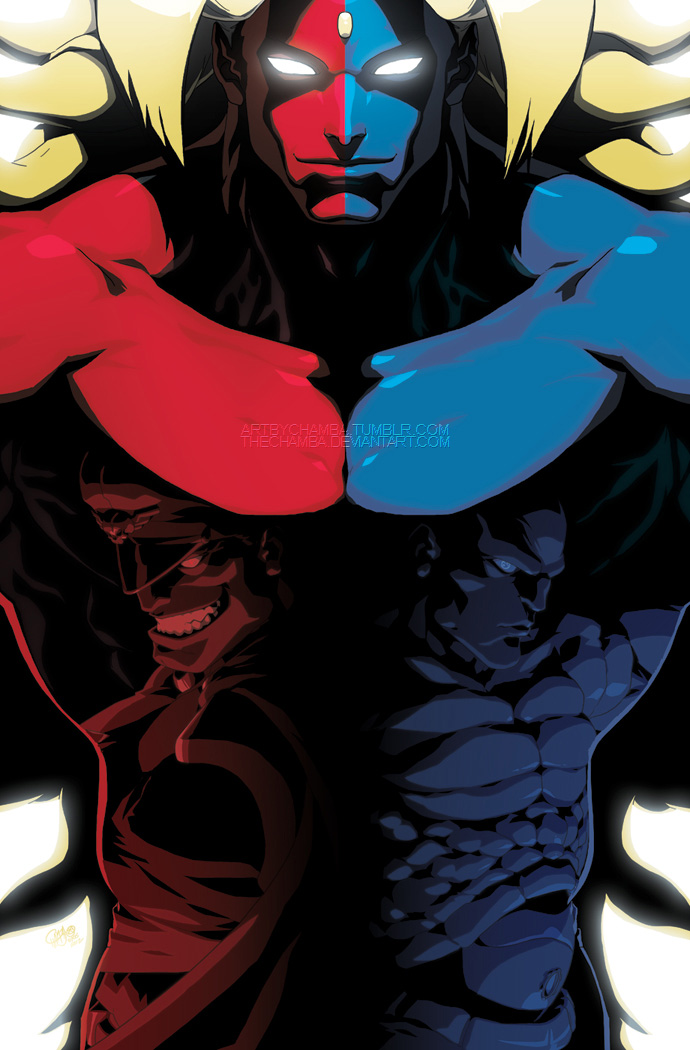 |
| Source |
Bison uses what is referred to as “psycho power.” It is essentially Bison’s physical
manipulation of the evil side of his soul, giving him the ability to corrupt
the minds of others, levitate himself through the air, increase his strength,
and even live without a body, transferring his soul into compatible new bodies, which is good, because psycho power has degenerative effects on them. He purged the good part of his soul, called "soul power", to use it and transferred that into the Italian fortune teller Rose. In a sense, he utilizes pure evil.
In the first two Street Fighter Alpha games, Bison was essentially just another criminal smuggling drugs, but in Street Fighter Alpha 3 he becomes the de facto villain, having his personal assassins and himself attack other characters in order to use their power to act as a fuel source a doomsday weapon called the Psycho Drive, which ultimately fails when his base is destroyed, along with himself.
He comes back in Street Fighter 2 to prove that he's the best, but then he's killed by Akuma, another villain. Naturally, he just gets another body in Street Fighter 4.
One of Bison’s associates is the villain of Street Fighter 4, Seth. Seth is the leader of Shadaloo’s weapons division, S.I.N., and in the events of Street Fighter 4, he took over while his boss was away, prompting Bison to come after him.
One of Bison’s associates is the villain of Street Fighter 4, Seth. Seth is the leader of Shadaloo’s weapons division, S.I.N., and in the events of Street Fighter 4, he took over while his boss was away, prompting Bison to come after him.
Using a special device he has in place of a belly called the
Tandem Engine, Seth can copy moves from other fighters using their
combat data. The moves he copies in-game are all from the original 8 Street Fighter
2 characters, such as the yoga master Dhalsim’s stretchy limbs, Guile’s sonic boom, and Russian wrestler Zangief’s atomic buster.
Seth's ultimate goal is a little less simple than simply wanting to become all-powerful. He organizes the Street Fighter 4 tournament in order to bring out Ryu's dormant Dark Hadou, as that is the last missing piece of power he needs to complete his project known as BLECE. BLECE (Boiling Liquid Energy Cell Explosion) is a special implant that uses a person's ki in order to make all their cells (and thus, their whole body) violently explode. Such a weapon would allow suicide bombers to go undetected through security and could spell chaos if it were ever completed and distributed. Before focusing on Ryu, S.I.N. captured a number of martial artists, presumably in an attempt to learn to manipulate ki.
Working under Seth is the franchise’s only villainess (not counting Bison's brainwashed female bodyguards): Juri, a hedonistic, psychopathic, masochistic tae kwon do master who was given what seems like a miniature Tandem Engine called the Feng Shui Engine in her left eye. Though it can’t copy moves like the Tandem Engine, the Feng Shui can absorb ki from her surroundings to substantially increase her physical performance, as shown in her ultra combos.
Working under Seth is the franchise’s only villainess (not counting Bison's brainwashed female bodyguards): Juri, a hedonistic, psychopathic, masochistic tae kwon do master who was given what seems like a miniature Tandem Engine called the Feng Shui Engine in her left eye. Though it can’t copy moves like the Tandem Engine, the Feng Shui can absorb ki from her surroundings to substantially increase her physical performance, as shown in her ultra combos.
Siding with Bison is Shadaloo’s fearsome trio of their
strongest fighters: Vega, a narcissistic and acrobatic Spaniard who wears a
mask to protect his beautiful face, Balrog, a brutish boxing thug only in it
for the money, and Thailand
muy thai bruiser Sagat.
Sagat is more of an anti-villain compared to the psychos
Vega and Balrog. Ever since Ryu (or rather, Evil Ryu) defeated and scarred him in the first tournament, Sagat has sworn to defeat him with the help of Shadaloo. He’s not obsessed with beating Ryu like so
many similar villains are with their arch nemesis, but needless to say, if he
sees Ryu, Sagat won’t let him walk away.
Eventually though he learns that revenge is not the way to go, leaves Shadaloo, and quits
being evil, unlike his fellow chums.
Unaffiliated with any other villain is the rogue warrior Akuma. Akuma is not unlike Darth Vader to Ryu’s Luke
Skywalker, except Akuma isn’t Ryu’s father.
Akuma embraced the dark side of the Dark Hadou, making him
stronger, but also ruthless. Throughout
Street Fighter’s story, Akuma seeks worthy opponents to beat into a pulp,
usually with his signature move the Shun Goku Satsu (Wrath of the Raging Demon). When using it, the screen turns black (or
white, depending on the game) and the enemy is horribly mangled. What exactly happens at that time depends on
the source, but it’s known for being a dangerous, forbidden technique. Akuma used the Shun Goku Satsu to (almost)
kill his brother Gouken, Ryu and Ken’s master, So he's primarily the enemy of the series' main duo. Like Ryu, Akuma travels the earth, and thus
crosses paths with the other fighters.
The villain of Street Fighter 3 is slightly less
of an obvious villain than M. Bison or Akuma, but only slightly.
Gill is the modern-day leader of the Illuminati,
an organization has existed for thousands of years. The Illuminati have manipulated events over the course of history to
follow a prophecy that predicts the apocalypse, and have genetically
experimented with people to make supreme beings. Gill is their most successful supreme being, and the Illuminati believe him to be the reincarnation of their former emperor.
Gill holds the tournament in Street Fighter 3 in order to find the best humans to repopulate the world with after the apocalypse by taking them to a special area of the world that will be safe when Armageddon comes.
Gill holds the tournament in Street Fighter 3 in order to find the best humans to repopulate the world with after the apocalypse by taking them to a special area of the world that will be safe when Armageddon comes.
In simpler terms: Gill and the Illuminati believe that the
apocalypse is going to happen anyway according to their prophecy, so he might
as well go with it and make the most of the end of the world by preparing to
rebuild it as best he can. Unlike Bison,
Gill believes what he does is for the benefit of mankind.
If his appearance doesn’t tip you off, Gill’s genetic
enhancements (somehow) allow him to use fire and ice, and his faux holy backstory
also gives him some divine power, most notably his seraphic wing and
resurrection moves. Seraphic wing does a
shitload of damage if you’re not guarding (similarly to a move from King of
Fighter’s Orochi), and resurrection allows him to completely refill his health after being killed! Resurrection is probably camp Street
Fighter
The Other Guys
The handful of main characters don't do justice to the sheer volume of characters. Street Fighter has a vast collection of quirky fighters that are minor in the grand scheme of things, each with their own reasons for fighting, be it fame, the prize money or revenge. To name a few: Dee Jay, a Jamaican dancing part machine, Cammy, a British special forces unit who was previously one of Bison's assassins, and Dan, a jokingly pathetic fighter trying to promote his dojo.Dan Hibiki is a playable mockery Capcom made to insult SNK, specifically the Art of Fighting games, now most known for its characters being in The King of Fighters. His "saikyo" (awesome) fighting style is a lot like the Art of Fighting's Kyokugen style... Only shit. His appearance is also one big composite, having Robert's face, a pink version of Ryo's gi, and some of Yuri's girly mannerisms, plus his dead dad's face looks like Takuma's Mr. Karate mask (though that was changed in the comics).
Dan was essentially conceived as a form of humiliation. You could prove how superior you are to someone else by using Dan as a handicap.
But come Street Fighter 4, the joke's on Capcom. Dan rules!
Almost as if by fate, Dan has been in the crossover games Capcom vs. SNK 2 and SNK vs. Capcom: SVC Chaos with Ryo.
There's also Rufus, who is simply awesome.
With all the muscular, serious, and prettyboy and muscular characters in Street
Fighter (and most fighting games, for that matter), Rufus stands out from the
crowd by being fat, talkative, and silly. He
rambles on, mistakes other people for his archenemy Ken Masters
(who doesn’t even know who Rufus is), and at the same time is able to kick
copious amounts of ass, practically ignoring his weight. It helps that his voice actor is Christopher
Corey Smith, one of my favorite actors in gaming, who does a fantastic job
giving Rufus a bumbling and semi-gruff voice to match his biker persona as well
as pulling off a funny Brooklyn accent.
He’s got a great leitmotif too.
Rufus is also example of what makes Street Fighter
characters so memorable: they’re exaggerated.
Whether it’s an exaggerated stereotype like T. Hawk or El Fuerte, or an
exaggerated character trait like Bison’s villainy or Vega’s vanity, Street
Fighter characters each have one trait that Capcom plays up. While several of the characters are established beyond that, they still reinforce their most noteworthy trait with virtually
everything they say and do on the battlefield, cementing their quirks into the
heads of players.
That exaggeration carries over into many characters’ visual
design. The constantly smiling Dee Jay
has a perfectly square jaw, the American fighter Guile wears an army uniform
with the American flag tattooed on his shoulder,
Turkish oil wrestler Hakan has red skin and metallic hair, and Akuma has a very
malformed, demon-like face. Several
Street Fighter characters are relatively normal-looking (by stylized anime standards), but for every 2 humans
Street Fighter has, it has one weirdo that symbolizes his or her big character
trait. That’s a good thing though,
because exaggerated characters are fun to watch and distinguish Street Fighter from
the other fighting game franchises.
Music
Complementing the characters are catchy soundtracks. How the music is handled in Street Fighter varies, but generally they have catchy beats you can tap your foot to and never distract from the fighting. They’re traditional game background music fitting with the stage or characters that, in a way, make you want to keep your groove.
Street Fighter also has what I consider to be the best
character select music in gaming. In how many games do you notice that?
I’ll admit that SNK doesn’t have character select themes
nearly as awesome as these.
But as much as music, characters, and story are important to
a game’s identity, it’s the gameplay that defines it. Street Fighter (2) is practically the progenitor
of modern fighting games with its controls.
Combat
Players are given 6 buttons: weak, medium, and heavy punches
and kicks. Every punch and kick has its
own range, attack speed, damage output, and recovery time, some of which vary depending on the character and direction of the control stick when thrown. By using their moves in quick succession,
players can skillfully execute combos by not giving opponents the chance to
block (done by moving backwards). With
two ways to block (standing and ducking) and the ability to jump or bypass
blocking with a grab (how to grab depends on the game), there are a variety of
ways for players to keep their opponents guessing.
The big divider that differentiates the combatants are their special moves. By quickly inputting varying movement and/or
button commands (often circular motions and then pressing the corresponding
attack button type), characters execute more specialized and fantastical moves
that define the characters, such as Ryu's infamous Hadouken, Russian wrestler Zangief's Atomic Buster grab
move, or the acrobatic Vega's Flying Barcelona.
Adding to the combat’s depth, the strength of the buttons used for the command usually determines the move’s strength, speed, and/or range. For example, using the weak button for most special moves may not do as much damage or have less range, but it’s faster and leaves you less open if it doesn’t connect.
Adding to the combat’s depth, the strength of the buttons used for the command usually determines the move’s strength, speed, and/or range. For example, using the weak button for most special moves may not do as much damage or have less range, but it’s faster and leaves you less open if it doesn’t connect.
The combat rules beyond the core mechanics vary with each
installment in small ways. Eventually
Street Fighter adapted more powerful super special moves that could be used after
filling a gauge in varying ways. These super special moves are used through slightly more complex commands, such as
two quarter circles forward and a punch.
There are also EX moves in Street Fighter 3 & 4, done by pressing two of the required button
type at once, which use up part of the meter in order to enhance a special
attack.
Street Fighter 4 also introduced the even more powerful ultra
combo moves, the meter for which can only be filled by taking damage and at
most can only be used twice per match for each player (unless a near-impossible scenario occurs involving "white health"). Additionally, SF4 added focus attacks that take a
moment to charge, but can break through an opponent’s guard at
full power and shrugs off one attack during the charge.
Regardless of the Street Fighter you play, they are games of
pacing, method, and reaction. You have
to judge and adjust the distance between you and your opponent, think of what
your opponent might do to lower their guard, consider how long you’re left open
after certain attacks, react to them, and mix up moves so that your
opponent can’t predict them. This is especially emphasized in Street Fighter 3. In that game, tapping toward your opponent right before a hit strikes leaves you invincible for a split second to allow for a counterattack, putting an even stronger emphasis on pacing. Street Fighter is less for
the hot-blooded button mashers and leans more toward the cool, collected,
strategizing types. The
hot-blooded players are too busy playing The King of Fighters, which I will get
into in the next post.
This video embodies what makes Street Fighter’s combat so
fun and shows off camp Street Fighter’s most epic moment ever. Notice how often the players shifted left and
right or just struck the air in front of them.
Personal fighter of choice: Vega.
Vega is a beautiful, flawless badass, and he knows it. Wearing a mask to preserve his beauty, Vega
works to get rid of everyone he finds inferior or ugly. He knows he’s awesome and vies to prove it
time and time again using his flashy and smooth moves, not unlike how I try to
look great when I play a game.
In battle, Vega is very acrobatic and has impressive range thanks to his clawed glove’s punches and special attacks. Vega has strong special and super moves that go straight across the
field, making it difficult for him to miss, provided you use good timing, and his scarlet terror attack is a good way to knock an opponent back at close range. In the right hands, he can be a seriously
slippery opponent.
His style of fighting is more in line with the faster
screen rakers seen in The King of Fighters, which made him much easier to
adjust to for me. In fact, he’s the
first character I beat Super Street Fighter 4 with on hard mode.
I don’t like being obvious with character choices by
choosing ones that are popular, but Vega’s fast play, eccentric
personality, and showmanship make him my character of choice in any Street
Fighter game he’s in.
As for Street Fighter 3, where Shadaloo is completely
absent, I go with Remy in Third Strike, because he is an actual King of Fighters character. He has Robert Garcia's projectiles from KOF 2003 as well as his dive kick, Ash Crimson's updraft kick and Iori Yagami's fashion sense (with Omega Rugal's insignia; that or a shirt once worn by Mick Jagger). Hell, one of his super attacks is practically the exact same as Ash's minus the green flames. I'd say they made him just for me, and there's clearly some inspiration from SNK visually, but Ash was actually made after Remy. Whatever was behind him though, Remy is my go-to Third Strike character.
The best of the bunch
If there’s any single Street Fighter game I recommend, it’s Super Street Fighter 4. Whether it’s the first Super Street Fighter 4 or any of its updated re-releases, it stands above every Street Fighter game before it. While the Street Fighter Alpha titles are strong on backstory and Street Fighter 3 has unique visuals and characters, Street Fighter 4 has the strongest character count and content. Every character is fully voiced in English, endings are fully animated, there are actual prologues and the stylized 3D is the perfect transition from the 2D titles before it.
I particularly recommend the 3D edition on the 3DS, which has every DLC outfit for every character unlocked
from the start, optional touch screen taps to use moves, an impressive 3D
effect with a special camera mode to show it off and the entire thing is portable. The trade-off is that
none of the stages are animated. Only the characters.
Why Capcom didn’t release Street Fighter 4 on the Wii, a
much stronger system, perplexes me.
I also enjoy the spin-off game Super Gem Fighter: Mini Mix, a much more lighthearted, simplified and cutesy Street Fighter game (with a few non-SF characters) in which most of the fighters change into different outfits for their combos and use the most delightfully absurd special attacks. You can get the original release on the PS1 or on the Street Fighter Alpha Anthology for the PS2. Yes, I have a disc with 3 of the biggest Street Fighter games and my favorite out of them all is Gem Fighter. Of course, it wouldn't be nearly as funny without knowing the source material.
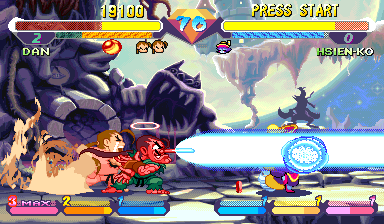 |
| "Oyaji biim!" |
Other Media
As stated in the third paragraph, Street Fighter has a lot of merch outside of the games. Some are promotional tie-ins, such as two OVAs for Street Fighter 4, and adaptations that tell their own stories. There’s the semi-famous live-action movie starring Jean Claude Van Damme as Guile, as well as a 26-episode animated TV show slightly based off of it. Both the movie and show paint Guile as the main hero, who fights the evil forces of M. Bison with other Street Fighters from the games. As you can tell from the premise alone, they deviate from the games in many many areas. Some people like to watch the live-action movie for its cheesiness and Raul Julia’s acting in his final role, but the animated series…
Just sucks. The characters are bland and derailed, fight scenes have no weight or finesse, the voice acting is poorly directed, and not to mention the animation is painfully inconsistent.
I’ve heard some people like to watch it just to laugh at it, but I doubt anyone has willingly suffered through the entire run and enjoyed it.
I’ve heard some people like to watch it just to laugh at it, but I doubt anyone has willingly suffered through the entire run and enjoyed it.
There’s another live-action movie based off of Street
Fighter called Street Fighter: The Legend of Chun Li, but it’s pretty much one
big insult to Street Fighter fans, possibly even moreso than the first live-action movie. You can see exactly why in Matthew Buck’s detailed review.
The Street Fighter movie you want to see is the animated movie based off of Street Fighter 2. It’s not great, and it certainly
suffers from some of the shortcomings 90s anime usually did, but the animation
is solid, the characters are accurate, and there’s a lot of (good) street fighting that
goes down. I guarantee the animated
Street Fighter 2 movie will give you more enjoyment than 5 episodes of that
awful TV show.
As sort of a follow-up, the animation studio behind the Street Fighter 2 animated movie also made a short series called Street Fighter 2V. Unlike the movie, 2V reinterprets the characters of the game in their younger years before the Alpha games came out, so knowing the characters well by this point makes it a bit of a pain to watch, honestly.
As sort of a follow-up, the animation studio behind the Street Fighter 2 animated movie also made a short series called Street Fighter 2V. Unlike the movie, 2V reinterprets the characters of the game in their younger years before the Alpha games came out, so knowing the characters well by this point makes it a bit of a pain to watch, honestly.
There were animated movies based off of the Street Fighter
Alpha games too, but trust me when I tell you that they are forgettable.
There are also Street Fighter comics. At first there was a comic adaptation by Malibu Comics, which was just about as bad as the TV show for many of the same
reasons, but since then there have been more faithful manga adaptations,
including a spin-off manga called Sakura Ganbaru, which centers on the daily
life of Street Fighter Alpha 2’s Sakura Kasugano. It’s amusing, but not especially notable.
The best comics are the ones by UDON Entertainment,
which I swear the Street Fighter camp immortalize on museum pedestals in vacuum-sealed diamond cases in a sacred booby-trapped temple. If they do, it’s for good reasons,
because the UDON Street Fighter comic may be one of the best comics based on a game I
have ever seen. It expands on the story and has strong, flashy fight scenes courtesy
of UDON’s nearly flawless artwork, in which they have great experience with
drawing for Capcom games (the endings in Tatsunoko vs. Capcom and all the graphics for Super Street Fighter 2 Turbo HD Remix, for example). Every panel in the Street Fighter comics are
rich, colorful, and full of texture and detail. To see a nice showcase of some of their work, browse UDON's official DeviantArt page.
Like I said though, "nearly flawless." On occasion characters can look off-model.
Street Fighter is truly the fighting game of fighting games, like the Fist of the North Star to shonen. Once it kicked off the fighting game genre, we got the varied fighting game camps we have today.
If you think this wimpy franchise is badass and action-packed, you’d best be ready for the next post, in which I’ll objectively and completely without bias detail Street Fighter’s rival and SNK’s massive, superior fighting game flagship (because I haven’t gone into detail on it enough already)!
If you think this wimpy franchise is badass and action-packed, you’d best be ready for the next post, in which I’ll objectively and completely without bias detail Street Fighter’s rival and SNK’s massive, superior fighting game flagship (because I haven’t gone into detail on it enough already)!


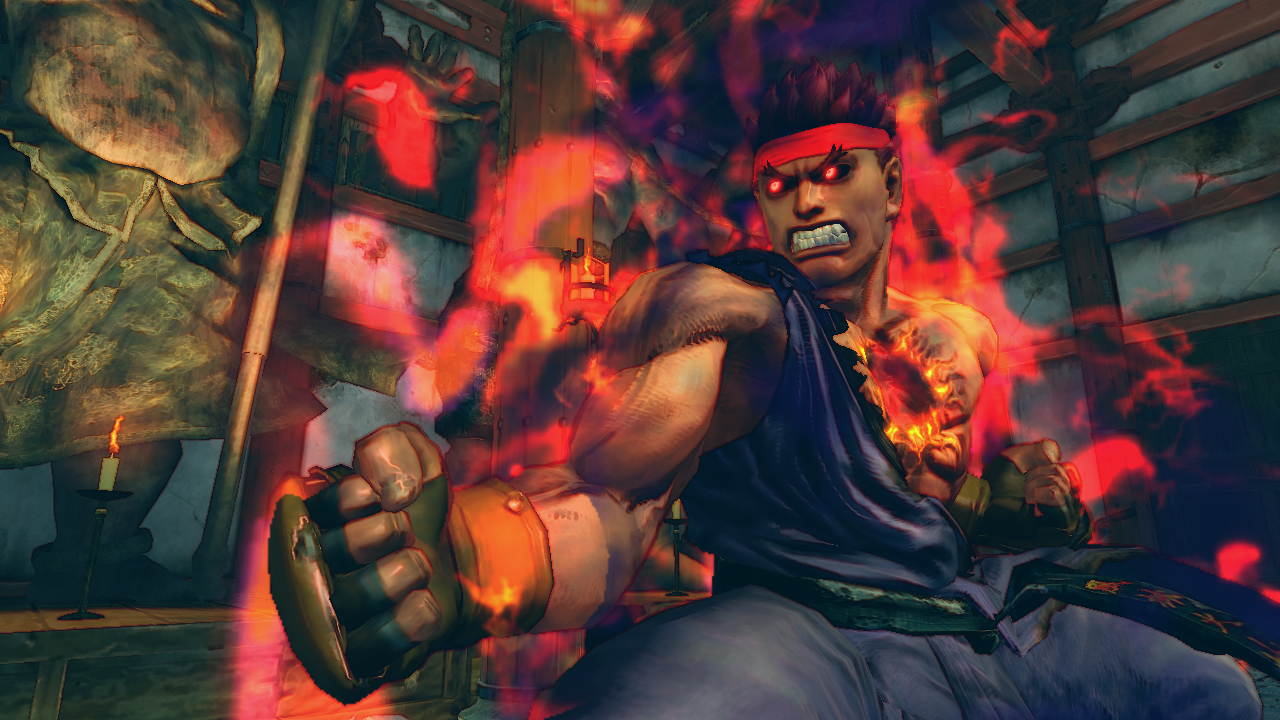



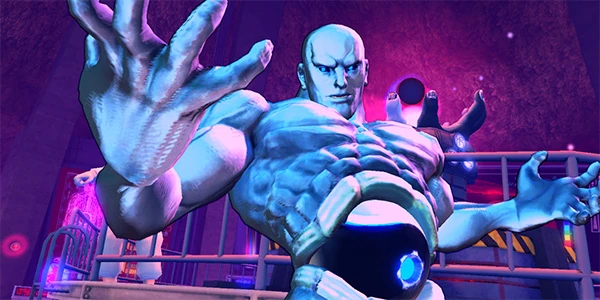









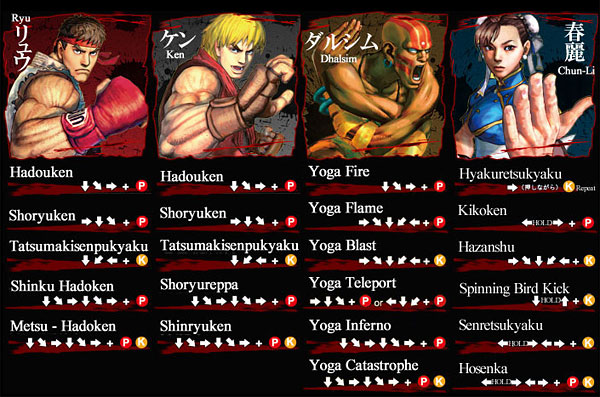

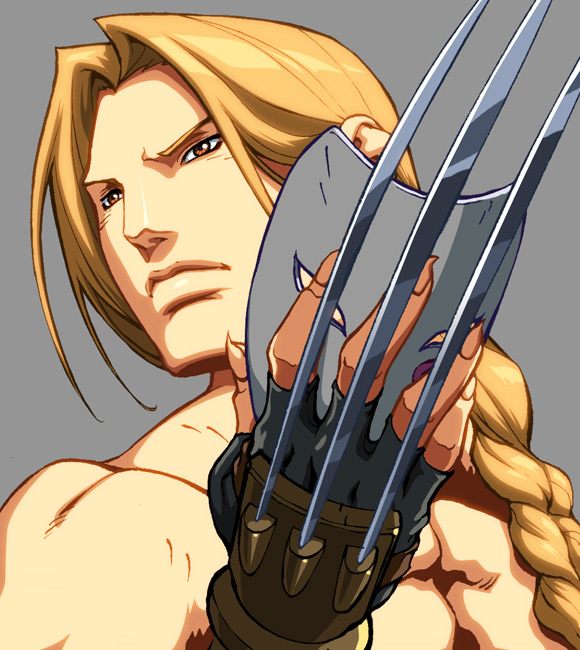


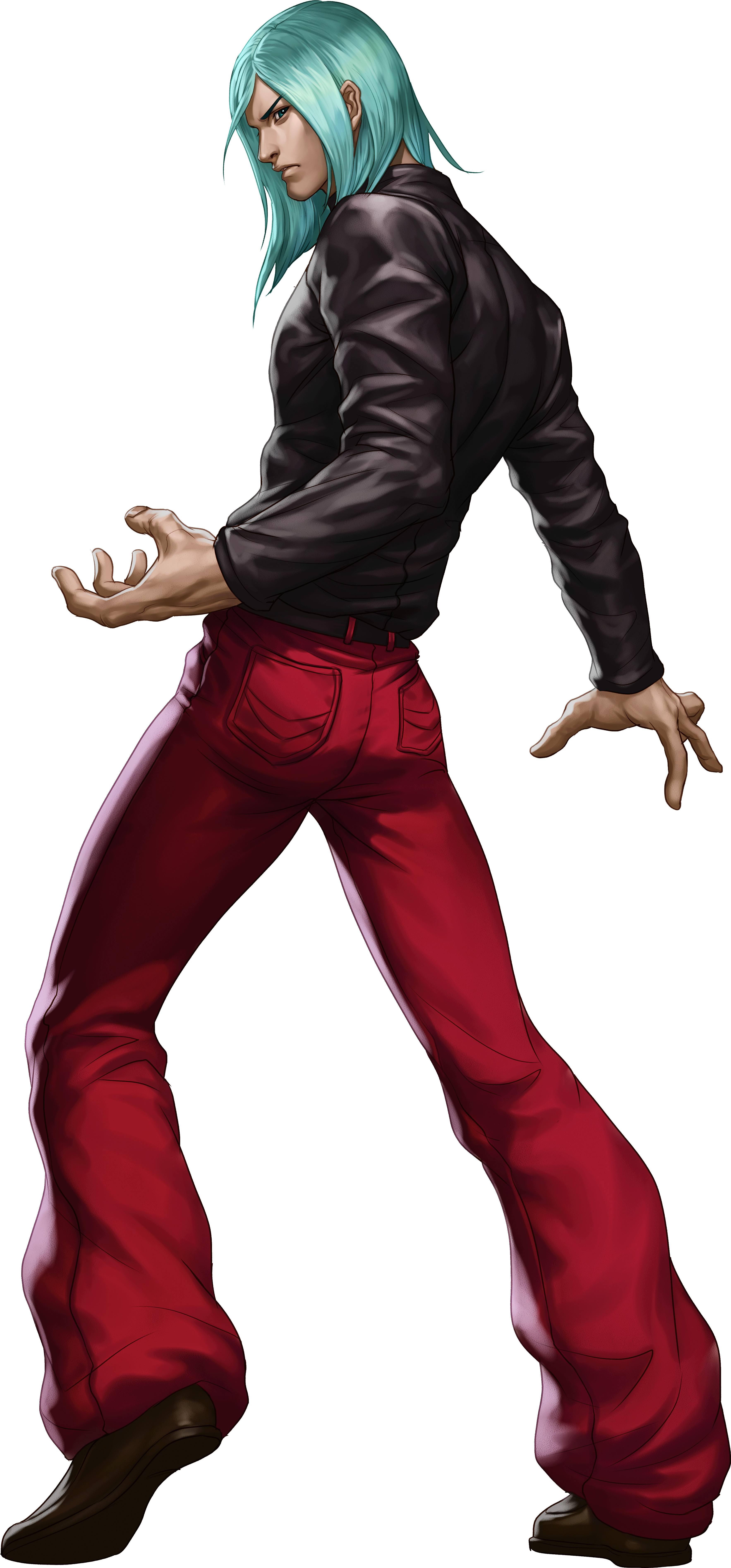


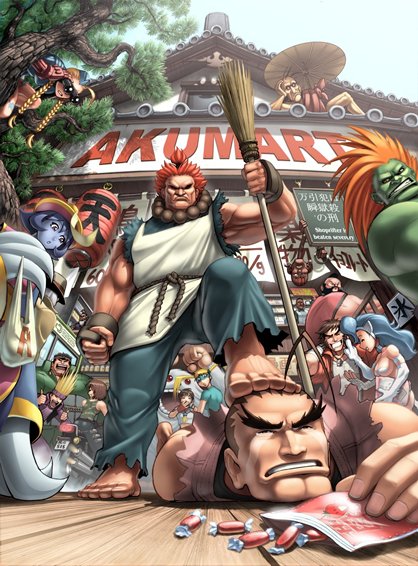
No comments:
Post a Comment